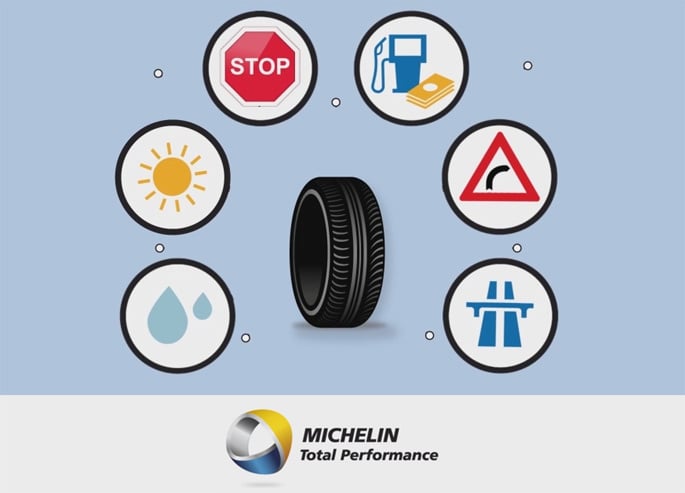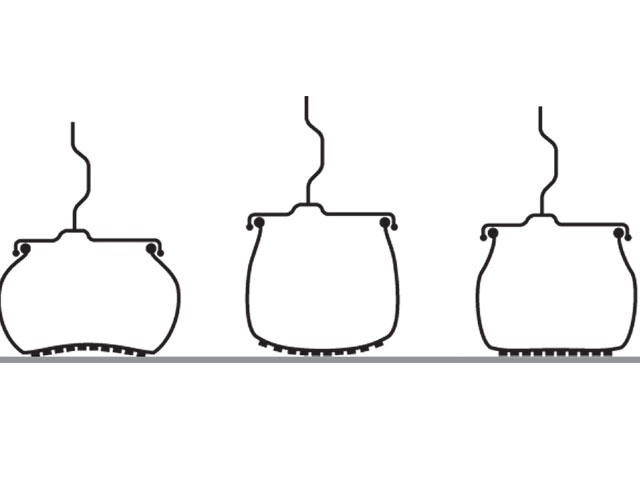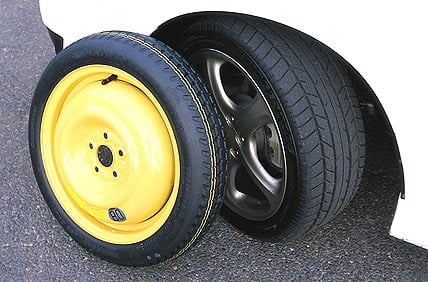If you ever visit an auto museum, you'll see most antique cars were equipped with two or more spare tires. Fortunately today's roads and improved tire durability have reduced that necessity, allowing our vehicles to be equipped with a single spare or none at all!
While some of today's vehicles are equipped with spares that match the other tires and wheels on the vehicle, they are in the minority. Now most vehicles are originally equipped with a "temporary-use" spare tire and wheel that probably differs in size and construction from the other tires and wheels on the vehicle. And some vehicles are even delivered without a spare tire and wheel thanks to the extended mobility provided by modern run-flat tires or temporary repair and inflation systems, like the ContiComfortKit.
Full-Size Matching Spare Tires and Wheels
While full-size matching spare tires and wheels require the greatest amount of storage space, they are the most versatile. Full-size matching spare tires and wheels should be integrated into the vehicle's tire rotation pattern from the beginning. This will essentially create a set of five tires that will last longer than just four, as well as will "wear out" the spare tire before it "ages out." If the vehicle has all-wheel or four-wheel drive, the spare tire will remain at a similar tread depth to the other tires on the vehicle, reducing driveline stress when called into service. Additionally, when it is time to replace the vehicle's tires, they can be replaced as a set of five allowing you to benefit from using the latest tire technology or select a more desirable tire size that fits the original wheels.
Many of today's spare tires are temporary spare designs intended to get the vehicle to a trained tire service person to repair or replace the tire that's been punctured or damaged.
Full-Size Temporary Spares
Full-size temporary spare tires and wheels match the vehicle's original tire dimensions, but typically feature lighter-weight construction and a shallower tread depth to reduce vehicle weight to improve fuel economy and make the spare easier to install. While most of today's vehicles are originally equipped with alloy wheels, full-size temporary spares are typically mounted on steel wheels and should be used only as spares.
Temporary/Compact Spares
Temporary/Compact Spare tires are physically shorter and narrower than the vehicle's standard tires and wheels. Their smaller dimensions require they operate at higher inflation pressures (typically 60 psi) than standard tires. Temporary/Compact Spares also feature lighter-weight construction and a shallower tread depth than standard tires to reduce vehicle weight, as well as allow more trunk space to be dedicated to luggage. The compact temporary spare tire and wheel that comes with a vehicle is designed to fit that vehicle only. Never attempt to use a Temporary/Compact Spare Tire and wheel on another vehicle unless it is the exact same make and model.
Folding Temporary Spares
While folding temporary spare tires have been installed in vehicles previously, they have extremely limited application today. Folding spares provide the greatest space savings but are more complex to use because they must be inflated with an air pump or a canister of pressurized air prior to use.
The Following Tips Can Help Make Sure That Your Spare Is Used Correctly and Safely
Learn how to install the spare on your vehicle before you have to. Learn how to access the spare tire, jack, lug wrench and wheel lock key (if equipped). Confirm where the jack is to contact the vehicle and practice changing a tire. This will make it a lot easier on that cold, dark rainy night when your vehicle has a real flat.
All temporary spare tires are designed for short-term use only; they are not designed with the same capabilities in terms of load capacity, speed capability, or all-weather traction.
Always check your vehicle's owner's manual and the temporary spare's sidewall for instructions on proper use. It is also important to recognize that controlling a vehicle may be more difficult when using a temporary spare, and temporary spare tires are usually accompanied with warnings that advise against towing a trailer, or traveling over 50 miles per hour for further than 50 miles.
Check the spare tire's air pressure with a tire pressure gauge on a monthly basis, when you check all other tires on the vehicle. There's nothing more aggravating than a flat spare when you have a flat tire.
Always confirm the inflation pressure before use and ensure that your spare has the manufacturer recommended inflation. It's important to check and adjust the temporary spare's inflation to the recommended pressure before driving away.
















